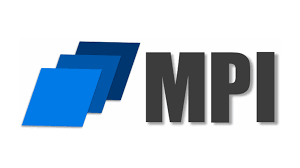An economic moat is a concept that describes the ability of a company to maintain a competitive advantage over its rivals over the long term. It is a persistent advantage that allows a business to protect its market share and profitability from the pressures of competition. Inspired by moats surrounding medieval castles, the idea of an economic moat has been popularized by legendary investor Warren Buffett.
Warren Buffett has often used the metaphor of an economic moat in his investor presentations and discussions, emphasizing the importance of identifying businesses with strong competitive advantages. Just as a moat around a castle provides a barrier of protection, an economic moat helps a company fend off competitors and maintain its position in the market. Buffett’s analogy of an ‘economic castle’ with a ‘moat’ around it symbolizes a company with durable and defensible competitive strengths, led by capable management.
There are various factors that can contribute to the creation of an economic moat for a business. These factors include patents, brand awareness, economies of scale, intangible assets, reduced expenses, and high switching costs. When a company is able to leverage these elements effectively, it can establish a strong competitive position that is difficult for competitors to breach.
Morningstar, a leading investment research firm, is known for providing proprietary rankings of businesses with economic moats. These rankings help investors identify companies with sustainable competitive advantages, which often translate into long-term outperformance in the market. By understanding the concept of economic moats and how they are formed, investors can make more informed decisions about where to allocate their capital.
In the context of medieval warfare, moats were designed to provide an additional layer of defense for castles, making it more challenging for attackers to breach the walls. Moats were not typically filled with dangerous creatures as often portrayed in popular culture; rather, they were often still water or filled with debris. As warfare evolved with the invention of gunpowder and cannons, the effectiveness of moats as a defensive measure diminished.
For Warren Buffett, the analogy of an economic moat serves as a powerful framework for evaluating businesses and assessing their long-term prospects. A company with a strong economic moat is better positioned to withstand competitive pressures and weather market fluctuations. Buffett places a high value on businesses with durable competitive advantages, as they are more likely to deliver consistent returns to shareholders over time.
In conclusion, the concept of an economic moat underscores the importance of identifying businesses with sustainable competitive advantages. By understanding the factors that contribute to the formation of an economic moat, investors can make better decisions about where to invest their capital for long-term growth and success. Just as a medieval castle with a well-kept moat symbolizes wealth and prestige, a company with a strong economic moat represents a valuable asset in an investor’s portfolio.

